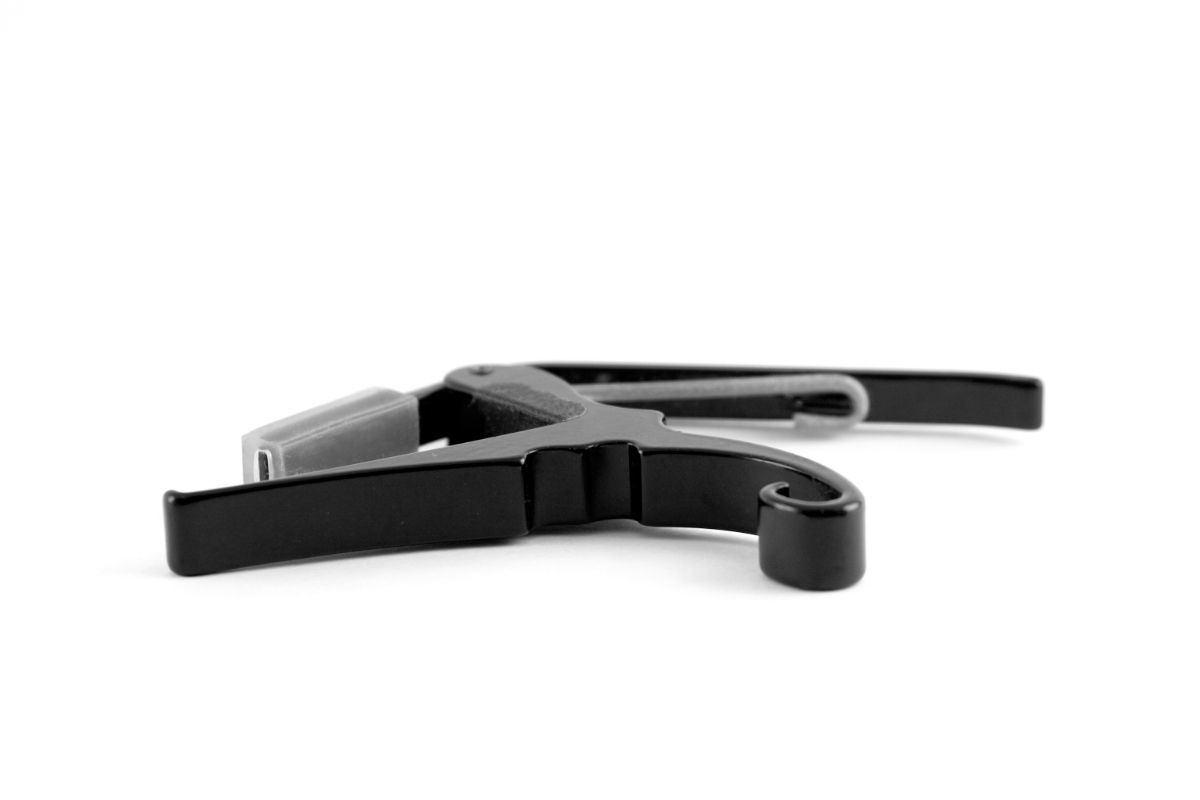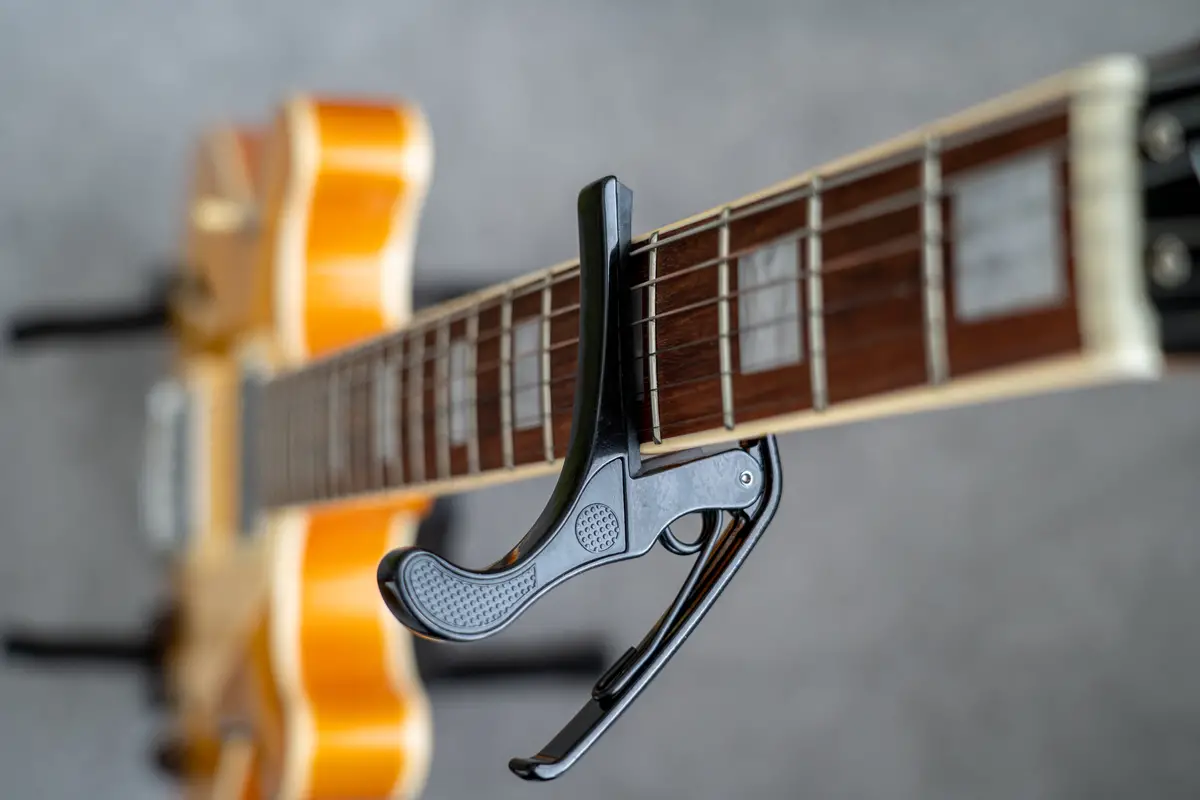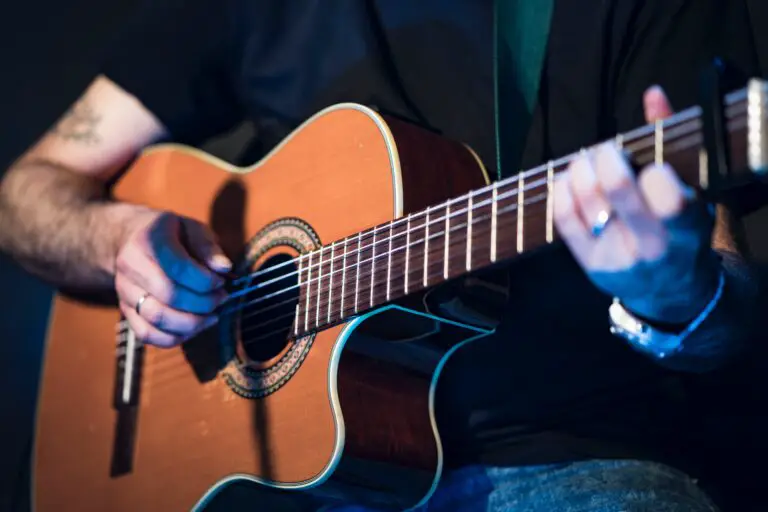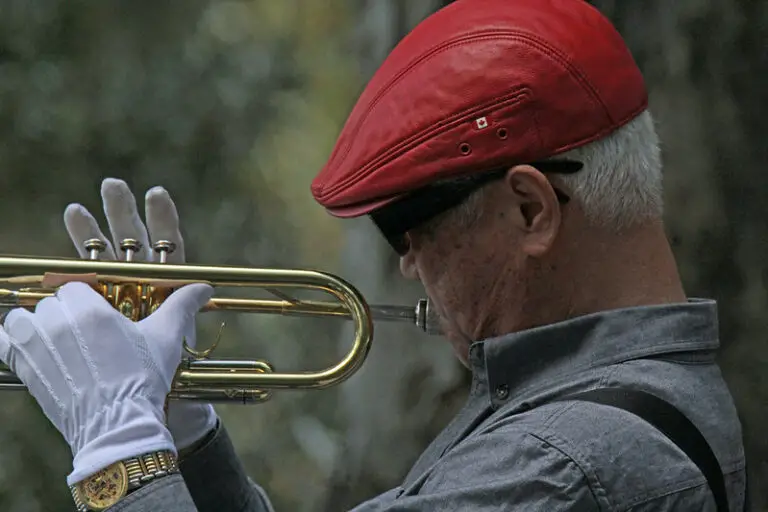Can You Use A Capo On An Electric Guitar?
A capo is a small tool that will aid you in developing your playing abilities by altering the pitch of the sounds you are creating. Ultimately, it provides a gateway to playing more complex songs on your guitar. However, can you use a capo on an electric guitar?
Yes, you can. However, you need to be sure and buy a capo that is specific to an electric guitar. Otherwise, the pitch of your guitar will be off.
Though it is quite easy to find a capo to suit many guitars. You can even find some that suit some of the best acoustic-electric guitars.
You might be more familiar with capos that go to acoustic guitars. However, they have capos for different instrument types. Below, we will discuss what you should know about capos for electric guitars.
What Is A Capo?
A capo comes from the Italian term for “head of the neck”. The capo is a small device clamped onto the neck of a guitar. It changes the pitch, so your instrument sounds higher.
A capo shortens the length of the strings, causing the pitch to go up. As you move the capo up the neck of your guitar, all the strings ring out higher. As a result, the key goes up one half step.
A capo is usually forcefully clamped across all the strings on the neck of a fretted instrument. You can also use it to hold down only a few strings, rather than all of them at once.
A capo can alter the sound on a variety of instruments, including banjos, ukuleles, and mandolins.
How A Capo Works
To fully understand how a capo works, it is also important to understand the function of a guitar nut. This is at the point where the fretboard of the guitar meets the headstock.
The nut is a thin strip, typically made of plastic. It has grooves so you can place and guide individual string properly down the neck. The strings on the instrument are then tightly secured around the tuning keys.
You can consider a capo as a movable nut as it reduces the vibration of the strings. But, unlike the proper nut, the capo does not feature grooves for the strings. Instead, a capo clamps down onto the fretboard and presses directly up against the strings down to eliminate vibration.
If you want to change the pitch, you need to loosen or tighten the capo and move it up and down the fretboard. Once it’s where you want, you can close it when you reach the best placement. Once this is done, it will press all strings on that fret down.
How to use a capo on any guitar
The capo is relatively easy to use on any type of guitar, and will not take much effort. This means you can position the capo exactly where you need it regardless of whether you’re a beginner or professional guitar player. Here are some of the important things you need to know about the capo, especially if you’re a beginner:
- Once you’ve scoped out the best position for the capo along the fretboard, you need to press the two tight ends and then clamp it on the string, much like a clothespin.
- It shouldn’t take longer than a couple of seconds to apply the capo (or remove it). You’ll know when it is correctly on, as it can change the key in just a few brief minutes.
- As a beginner, you might need to practice putting it in position prior to use, and other issues may also arise. The most frequent mistake you may make is putting the capo into an uneven position. Here, some strings give off an incorrect pitch. However, you can prevent this by ensuring using the relevant fret bar as a guide.
Using A Capo On An Electric Guitar

As we have brushed on, capos have a variety of uses. For example, a capo is useful if you want to produce a particular sound using certain chord shapes, but the tonality of the song is too low.
You will more commonly find a capo attached to an acoustic guitar. This is because of the different type of playing that an electric guitar requires thanks to a larger number of frets, which makes it the best guitar type for producing rich solo melodies in higher registers rather than chords.
Of course, it is possible to solo while playing an acoustic guitar, but an electric guitar is far more suitable for soloing in higher registers because of its brighter sounding steel strings and the way they vibrate to create sound.
Why is this important? Well, to play a guitar solo, you don’t need to use a capo. This is because you primarily used capos for playing chords in particular shapes.
Because electric guitars also have a narrower neck, it is far easier to play barre chords than on an acoustic guitar, where playing barre chords is much more physically demanding.
That’s why capos are more useful for acoustic guitars. Still, there’s nothing wrong with putting a capo on an electric guitar!
Choose The Right Capo
Capo quality is critical, but not in terms of the tone. A good capo must provide you with increased string tension, must be convenient to use, and also made from durable materials.
If you still want to use a capo on an electric guitar, then you need to make sure you’re buying a quality item for steel strings rather than nylon strings.
A large majority of capos can fully support both steel and nylon strings. You will need to look for a strong capo that can successfully hold the steel strings of an electric guitar down, without overly distorting the sound. This can be fairly important if you are also shopping for some of the best metal guitars.
This is because nylon strings hardly require any pressure to hold them down, meaning all you’ll need is a lighter capo. With steel strings, you need to apply more pressure, and consequently require a stronger capo spring.
Will A Capo Damage The Neck Of An Electric Guitar?
No, a capo cannot cause damage to the neck of a guitar. However, it can wear out the finish of the neck if it is over-tightened, especially for long periods of time.
Contrary to popular belief, using a capo will also not damage the frets, truss rod, or the wood of an electric guitar, as long as you use it properly!
We’d recommend following the same rules for capo use as you would on a steel string acoustic. Place the capo properly on the guitar neck and make sure that you don’t squeeze it too tightly. Also, always remember to remove the capo when done playing.
Leaving A Capo On An Electric Guitar
Do not leave the capo on the fretboard when you aren’t playing it! When clamped onto the neck, the capo holds the strings down on the fretboard. This creates additional tension between the neck and the top of the guitar.
So it’s a wise choice to remove it as soon as you’re done so that it doesn’t damage your frets (such as grooves or small indentations). However, leaving the capo on the headstock is okay!
Conclusion
The answer is simple. Yes, you can use a capo on an electric guitar, although it won’t have the same effect as using a capo on an acoustic guitar would.
f you choose to use a capo with your electric guitar, then you’ll need to search for a capo that is strong enough to flatten down the stainless steel strings of your instrument in order to produce the required sound.








